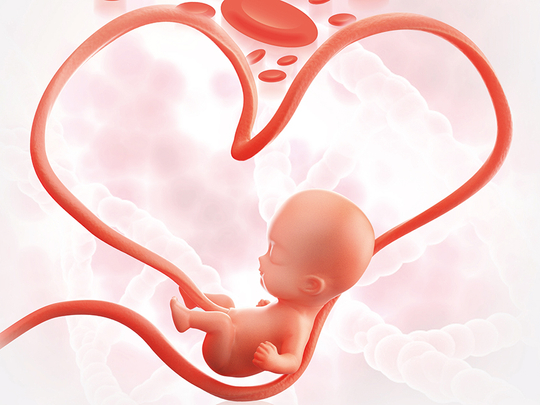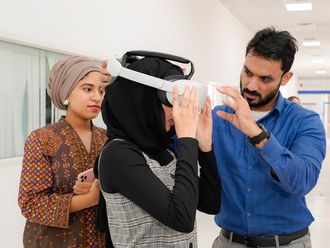
The Dubai Cord Blood and Research Centre (DCRC) is currently training private hospitals in Dubai to collect donations of cord blood stem cells with the aim of increasing the number of donations of ethnically diverse stem cells.
DCRC, which has successfully stored 7,000 cord stem cells since its inception in 2006, has also recorded a notable increase in awareness and in turn donations, which are attributed to the intensive campaigns and programmes launched by the centre.
Rigorous screening
Fatma Al Hashimi, Genetic Specialist and Head of Donor Recruitment at DCRC, revealed the centre has received much more than 7,000 cord stem cells. The centre preserves only quality cord stem cells that have passed various examinations.
“After collection, the cord blood stem cells have to undergo various tests before being stored,” she says. “We need from two to three weeks to determine whether the cord blood unit is acceptable or not for cryopreservation.
“First, we have to check and make sure the cord blood unit is labelled, free from clot and contains sufficient volume of cord blood.
“We also need to determine the nucleated cells, recovery rate, CD34+ cell count and the viability.
“We then test it to find out if there are any viral infections, which takes 4-5 days while simultaneously performing cord blood culture, which takes 2 weeks.”
Al Hashimi revealed an average of 80 per cent of private cord blood units are accepted whereas only 40 per cent of public cord blood units are accepted.
“It is all about quality and not quantity and it is important that the cord blood unit meets the international standard and can be used for transplantation if needed in future. We have treated 17 patients with diseases such as thalassemia, leukaemia and sickle cell.”
Al Hashimi also said the centre, which is the only government entity that offers public and private banking of cord blood, advocates the importance of public donation to help form a substantial registry of cord blood stem cells for the UAE.
The centre has seen a steady increase in awareness levels among the public about the importance of donating cord blood stem cells. From just 73 donated units in 2006, the number rose to 768 donated units in 2017.
“In 2012, we started implementing different recruitment techniques to increase the number of cord blood donation in the UAE,” she says. “By the end of 2016, with the help of the Latifa Hospital management we assigned nurses at the antenatal clinic to educate pregnant women about cord blood donation and the importance of donating it in helping treat many patients with life-threatening diseases.”
Increase in donations
Al Hashimi said this resulted in significant increase in cord blood donation, which highlight the importance of having face-to-face consultation with pregnant women and making them aware about the beneficial use of cord blood stem cells.
She added there is however still a need to raise more awareness by studying the different motivators and barriers that affect cord blood donation in the UAE.
Applying successful recruitment strategies in hospitals can result in increase in donation. More than 80 diseases can be cured with the help of cord blood stem cells and this includes leukaemia, and treatment of genetic disorders such as thalassemia and sickle cell disease.
Al Hashimi said the centre started training private hospitals to register and collect cord blood stem cells from donors to increase the number of ethnically diverse donations because there are many Arab families in need of cord blood and the centre is sometimes unable to find a match within the same ethnicity.
“When the cord blood belongs to the same ethnicity there are higher chances of HLA matching,” she said. “This means the chances of the body rejecting the transplant is significantly lower. Thus the success rate of transplant is higher when the cord blood is from the same ethnic group.
“Mothers who have multiple pregnancies but do not have any family history of such diseases are ideal candidates for public banking of cord blood. After they store the cord blood for their family, for the subsequent pregnancies, it is recommended they donate the stem cells for the public registry.
“Our appeal to women is to ensure stem cells are not wasted as they can be used to save lives.”
DCRC centre provides a tour for pregnant women and families interested in preserving stem cells for their families or for the purpose of donation.
In addition to stem cell banking, the centre also conducts molecular tissue compatibility matching tests as well as several other molecular markers for certain diseases.
Those interested can reach the centre at 04 219 4010/11.












